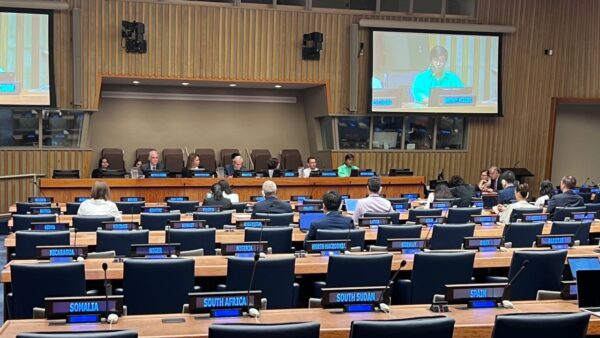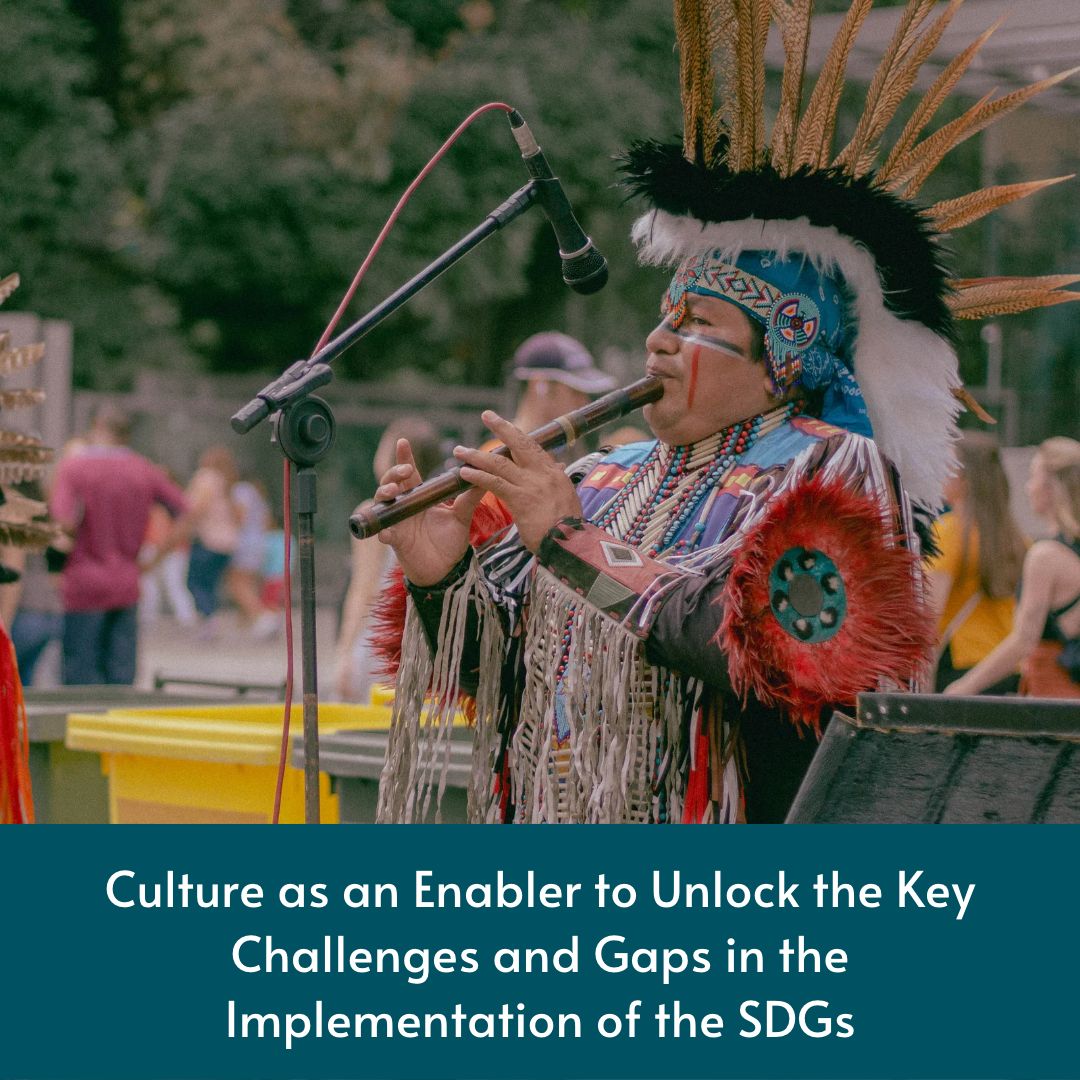President Douglas C. Comer, Ph.D., moderated “Culture as an Enabler to Unlock the Key Challenges and Gaps in the Implementation of the SDGs” at the United Nations on 5 July 2023. The panel was part of an interactive dialogue on Culture and Sustainable Development entitled “Culture as a global public good: Filling SDG implementation gaps beyond 2030.”
Read the Concept Note for the event, Panelist Biographies, and more about Implementing Culture in Sustainable Development by clicking on these links. The entire session can be viewed here (Panel One starts approximately 19 minutes into the recording): High-level interactive dialogue on Culture and Sustainable Development on the theme “Culture as a global public good: Filling SDG implementation gaps beyond 2030” – General Assembly, 77th session | UN Web TV.
President Comer’s Opening Remarks
Hello, my name is Douglas Comer and I thank you for the honor of being moderator for this discussion. I am president of the United States National Committee of the International Council on Monuments and Sites, or ICOMOS. As you know, ICOMOS advises UNESCO on cultural issues by virtue of the World Heritage Convention, an international treaty that has now been signed by more countries in the world than any other. The United States was a driving force behind the final draft and the ratification of the World Heritage Convention in 1972, and our national committee was the first of what are now 107 national committees. And I am enormously pleased to say that the government of the United States is on schedule to rejoin UNESCO in the coming weeks.
As an archaeologist, my experience over several decades has focused on the use of data collected from satellite and aerial platforms to enhance management and interpretation at World Heritage Site. That might seem quite narrow, but I would like to quickly share a few ideas taken from my experiences that seem relevant to the guiding questions for our discussion today:
First, How can we harness culture as a driver of behavioral change in support of SDG implementation at the community and national levels?
What we term culture and nature are inseparable, they are linked in a dialectic: human occupation of a landscape alters that landscape. A human culture either adapts to the environment that it has altered, or the culture ceases to exist. There have been countless societies that have collapsed because of sudden regional environmental change that they themselves precipitated, or because they altered the environment in ways that could not accommodate periods of natural environmental change: sea level rise, periods of intense storms and precipitation, and drought among them. What we have seen many times at the regional level is now happening globally. Yes, abrupt climate change has occurred because of volcanic eruptions or the coincidence of climatic cycles, but never has there been such rapid change on a global level. And the cause of this change has been a global cultural change, the norms that we have established or aspire to. Does every human on earth need a personal automobile? Indeed, does anyone? And does that seem unthinkable?
However, culture, in this case perhaps more precisely heritage, can be a driver of the climate action that we need. Leading the way here are indigenous cultures who see clearly that their heritage is being threatened with destruction by climate change. Memory is long in indigenous cultures. The Indigenous knowledge broker for Australia told me that his own culture had been dealing with climate change for 60,000 years. These cultures know the warning signs: how the loss of insects because of increasing numbers of intense hot fires is reducing numbers of small mammals, and that this domino effect eventually brings down entire ecosystems. Monitoring environmental change at the most granular level is a part of indigenous cultures because they have a vital stake in this. We should start listening to them.
This is relevant to our second guiding question: How can we improve data collection, monitoring, and evaluation mechanisms to measure progress in integrating culture into the SDG implementation process?
As much as I love data and analyzing data, data does not change policy. Stories change policy, stories that feature impacts on humans. As fellow humans, we can respond to that with no specialized training.
Perhaps the most important point that I would raise here is that we need true partnership between scientists and Indigenous knowledge holders. That will take a strong effort. Indigenous groups have seen too many teams of geologists exploring for oil, gas, and minerals as a prelude to their removal or the destruction of the environment on which their cultures depend.
And the third guiding question:
How can we strengthen international collaboration and maximize coherence of efforts to harness culture’s contribution to sustainable development?
People who visit World Heritage Sites are seldom disappointed. I have seen not only the awe on the faces of visitors to Machu Picchu, Petra, Angkor, and many others, but have also been impressed with how much of what they take away concerns not just the magnificence of the site, but also the bonds that they make with the people of the countries in which these sites are located. Pointing out the ways in which environmental change is negatively impacting most of these sites today will be a powerful motivator for many of the SDGs, which are concerned with the economic and social well-being of people everywhere.
We can enhance these benefits by developing means by which to enhance management and interpretation at World Heritage Sites and other cultural sites. There are ways to improve the experiences provided to visitors. Working together to support cultural sites through exchange programs and mentoring would move all sites involved ahead together. This would apply not only to archaeological sites, but all cultural sites.


